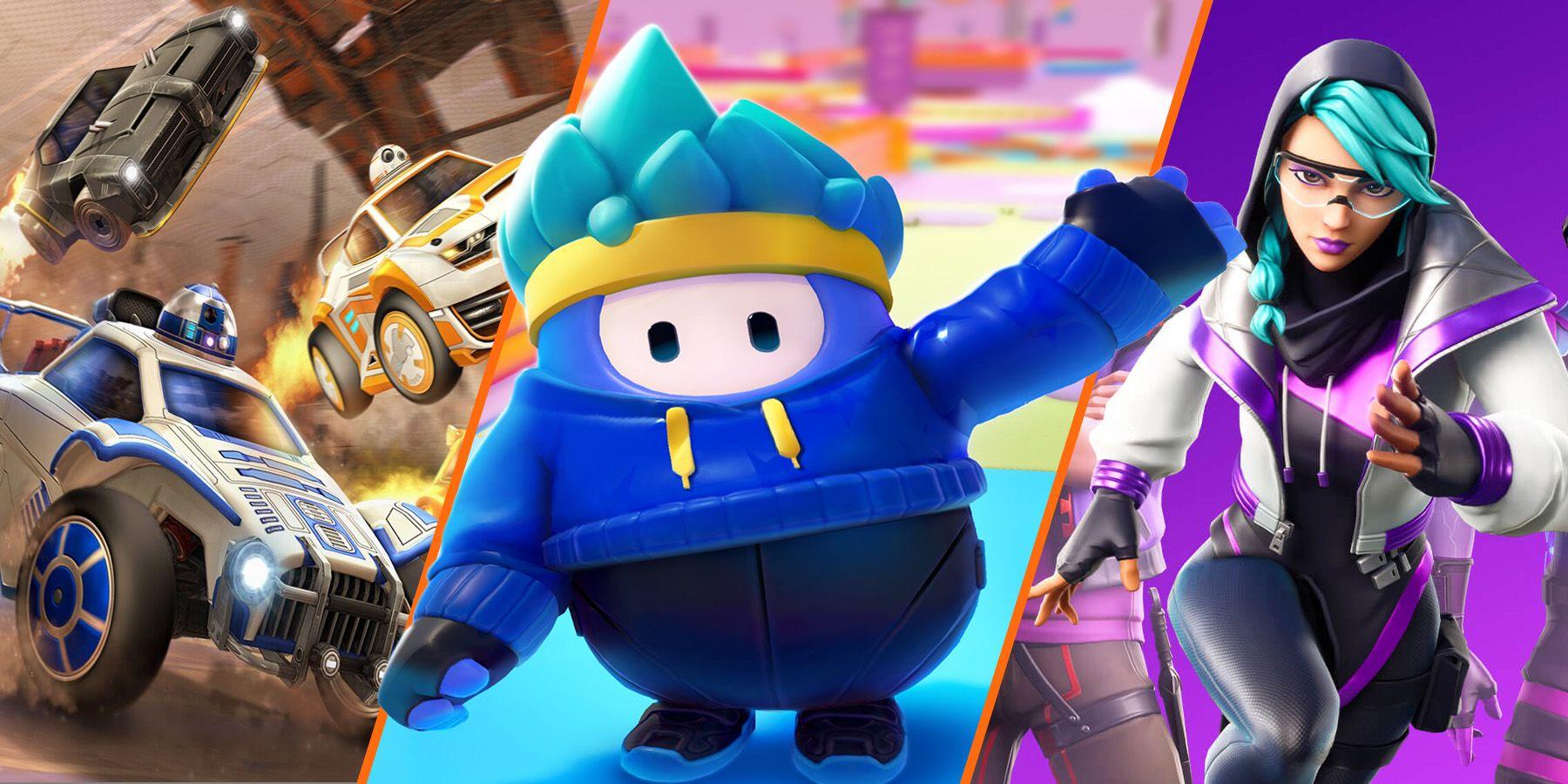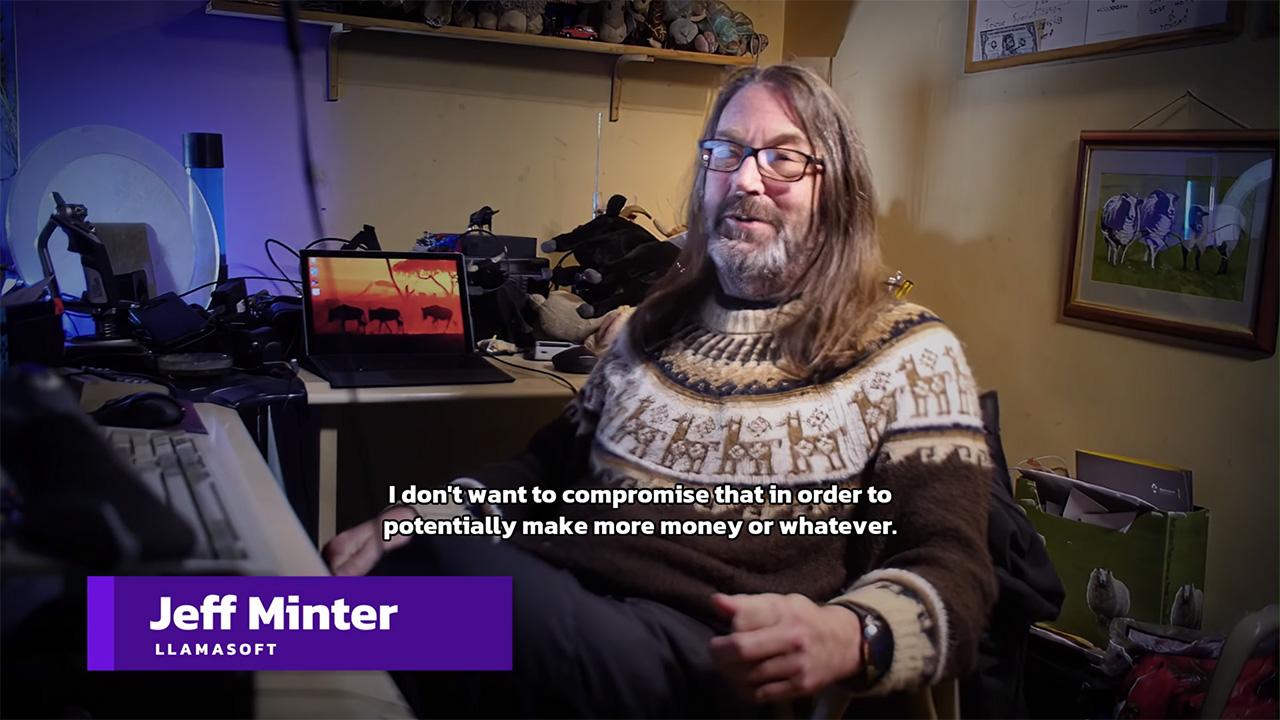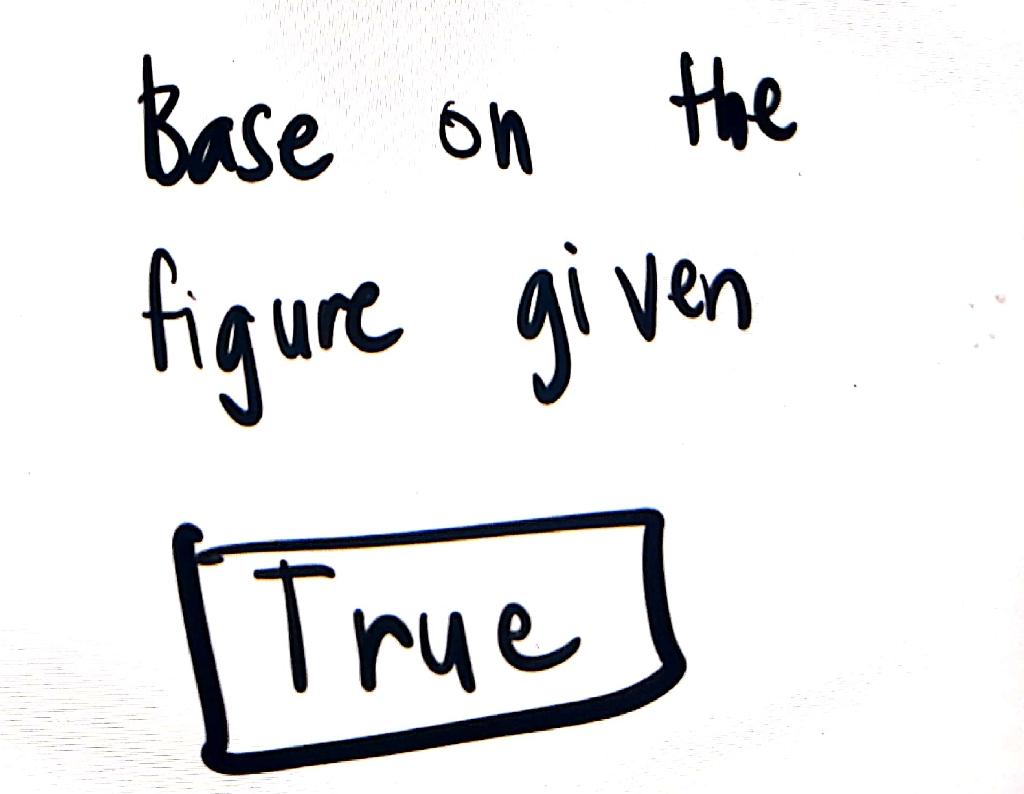‘Delving into the Twisted Realm of Gaming: A Conversation with the Visionary Jeff Minter’
In an industry where creativity knows no bounds and imagination runs wild, there exist pockets of unscrupulous entities tarnishing the reputation of gaming. Jeff Minter, a gaming icon with an illustrious career spanning decades, has never been one to shy away from voicing his concerns about the darker side of the industry. Llama System’s renowned founder has consistently pushed the boundaries of innovative game design, known for his psychedelic, immersive experiences that transport players to new dimensions. In this thought-provoking conversation, Minter tackles the pressing issue of scam games, shares his insights on the potential of the Switch 2, and delves into the world of his upcoming game, ‘I, Robot.’ Join us as we navigate the ever-changing landscape of gaming, through the lens of a visionary who has spent a lifetime redefining what’s possible.
Feature Its A Perversion Of The Whole Thing
Speaking candidly about the state of the gaming industry, Jeff Minter expresses his discontent with the prevalence of scam games, citing their manipulative nature and ability to exploit psychological vulnerabilities in players. He argues that these games often trick people into buying more by using tactics such as loot boxes and microtransactions, rather than offering a genuine, enjoyable experience.
On the topic of the rumored Switch 2, Minter shares his skepticism about the potential benefits of improved hardware, suggesting that the focus on graphical capabilities can be detrimental to gameplay and innovation. He also touches on his own project, ‘I, Robot’, offering insight into its inspirations and the development process. Notably, Minter mentions his admiration for the works of Philip K. Dick and Isaac Asimov, whose influence is evident in the game’s themes and narrative.
Some notable scam game strategies:
- Loot boxes and microtransactions
- Manipulative in-game ads
- Games designed to encourage addiction
- Deceptive or missing gameplay information
| Games That Shouldn’t Be Played | Reasons |
|---|---|
| Manipulative Games | Include exploitative practices |
| Addictive Games | Encourage unhealthy playing habits |

Jeff Minter On The State Of Gaming
Jeff Minter, the renowned game developer behind Tempest and Gridrunner, has been around long enough to see the industry shift from its roots. He has seen, and experienced firsthand, various events and trends shape the gaming landscape. Minter notes that lately, in his opinion, there are factors pushing the industry further away from its core. One of these problems, he points out, is rampant copycat practices and exploitation games.
Minter highlights specific problems he’s experienced himself. One example was making small purchases on games designed to goad players into spending money. Additionally, some companies aren’t providing a seamless experience for gamers to get the full value from their games. Instead of providing legitimate value and replayability, many modern games are created with cash-grabs and manipulative tactics in mind. What this ultimately does is push gamers away and slowly erase the genuine experience many developers initially attempted to bring to the foreground. Minter finds himself frustrated at microtransactions causing game longevity as well as poor game continuity.
Gaming Companies
Company |
Revenue 2020 |
Revenue 2021 |
| Nintendo | $13.4 billion | $17 billion |
| PlayStation | $8.6 billion | $10.6 billion |
| Xbox | $6.7 billion | $10.2 billion |
Gaming Market Growth Factors
-
Microtransactions:
- Offer free trial periods on premium content
- Continuous value updates
- Offer Premium Content
- Early access updates
- New free exclusive game releases

The Dark Side Of Free To Play
The video game industry has seen its fair share of controversies over the years, but few have sparked as much outrage as the proliferation of predatory free-to-play titles that prey on vulnerable players. These games, often masquerading as innocuous mobile apps or online multiplayer experiences, employ insidious monetization tactics designed to extract as much money as possible from unsuspecting gamers.
Among the most egregious offenders are those that use loot box mechanics to peddle microtransactions, circumventing traditional notions of fair play and manipulating players into spending more money than they ever intended to. As Jeff Minter astutely notes, this phenomenon represents a profound perversion of the traditional gaming experience. Some notable examples of games that have come under fire for their exploitative monetization practices include:
- Star Wars Battlefront II (EA): Infamous for its aggressive use of loot boxes and microtransactions.
- PlayerUnknown’s Battlegrounds (PUBG) (PUBG Corporation): Criticized for its use of loot boxes and other monetization tactics.
- Apex Legends (EA): While popular, has faced criticism for its monetization model, particularly regarding its use of loot boxes.
| Game Title | Monetization Practice | Controversy |
|---|---|---|
| Star Wars Battlefront II | Loot Box Mechanics | Believed to be promoting a ‘pay-to-win’ culture |
| PlayerUnknown’s Battlegrounds (PUBG) | Loot Boxes and Microtransactions | Criticized for charging players for in-game items |

A Look At Scam Games And Their Impact
For most of us, the concept of a game evokes feelings of fun, excitement, and maybe a hint of competition. But what happens when this positive experience is hijacked, manipulated, and turned into a money-making scheme? That’s exactly what’s been happening with scam games, a trend that’s been gaining momentum in the gaming industry. These games are often low-quality, misleading, and designed to extract as much money from players as possible.
One of the defining characteristics of scam games is that they’re often dressed up to look appealing, using elements like:
- Eye-catching graphics and sound effects
- False or misleading gameplay trailers
- Over-the-top social media advertising
To better illustrate this, consider a hypothetical example of what these games might look like:
| Game Name | Appearance | Reality |
|---|---|---|
| “Warrior’s Quest” | High-end graphics, action-packed gameplay trailer | Low-quality, buggy gameplay, money-making schemes |
| “Tournament Challenge” | Professional-looking interface, fake tournament prizes | Randomized, unfairly balanced gameplay, minimal rewards |

The Future Of Nintendo Switch And Its Possibilities
As we look towards the horizon, the possibilities for Nintendo’s next console seem endless. With the Switch proving to be a massive success, it’s hard not to ponder what’s in store for its successor.
Jeff Minter’s thoughts on the Switch 2 are well-documented, and he’s not alone in his eagerness for more. But what exactly could we expect from the next iteration of Nintendo’s hardware? Here are some possibilities that come to mind:
- Improved Performance – With advancements in technology, we could see significant boosts to the Switch’s processing power, memory, and graphics capabilities.
| Speculated Features | Description |
| Enhanced Displays | Higher resolution screens, potentially even 4K, or OLED displays that boast vibrant colors and deep blacks. |
| Extended Battery Life | Improved battery life that lets gamers enjoy their favorite titles for longer periods of time without needing to recharge. |
| New Controllers | Upgraded controllers with haptic feedback, customizable buttons, or even biometric sensors that track player health and emotions. |
With these possibilities in mind, it’s easy to see how Nintendo’s next console could shape the gaming landscape for years to come. One thing’s for sure, though – whatever the Switch 2 brings, it’s sure to be an exciting evolution of Nintendo’s innovative approach to gaming.
Minters Thoughts On A Potential Switch 2 Release
When it comes to the future of gaming, Jeff Minter’s views are as sharp as his shooter skills. While discussing the gaming landscape, the subject turned to a potential Switch 2 release, and Minter shared his thoughts:
Minter’s take on the matter is centered on what he believes Nintendo’s focus should be. Innovation over iteration seems to be his mantra, as he deems it crucial for the company to “do something new” rather than simply upgrade existing hardware. Whether this will happen with the rumored Switch 2 remains to be seen. He also points out that:
The Switch 2’s market performance might depend on how effectively Nintendo differentiates it from its predecessor
The cost and specs will be crucial in determining the console’s success or failure
* A genuine leap forward in terms of processing power and graphics capabilities is needed to truly leave an impact
In the following quote, Minter summarizes his expectations from Nintendo for the Switch 2 release: “Don’t just release a incrementally better version of the existing machine unless you’ve got a ‘killer feature’ that completely changes the game… But merely incrementally better – more horsepower, higher resolution, some mildly clever controller – isn’t likely to be enough to shift the needle.” It’s interesting to look at data of Nintendo’s past game-changing consoles:
| Console | Release Date | Innovative Features |
| Nintendo 64 | 1996 | First console to use analog stick, full 3D capabilities |
| Nintendo Wii | 2006 | Motion controls, casual gaming |
| Nintendo Switch | 2017 | Portable-home hybrid console |
Nintendo has consistently been known for bold innovation throughout its console history. Only time will tell if they can live up to that reputation again.
A New Generation Of Games On The Horizon
With the rapid evolution of gaming technology, the industry is poised on the cusp of a significant transformation. As gamers, we’re about to witness a tectonic shift in the way we interact with games, courtesy of upcoming console updates and innovative game designs.
The future is full of possibilities, with games likely to feature:
- Enhanced AI-driven NPCs, making interactions feel more organic and immersive.
- Cross-platform play, breaking down barriers between console and PC gamers.
- Advanced VR capabilities, offering more realistic and engaging experiences.
| Gaming Console | Expected Release | Predicted Features |
|---|---|---|
| Switch 2 | 2024 | Upgraded processing power, improved battery life, and enhanced graphics capabilities |
| PlayStation 5 Pro | 2025 | Increased storage capacity, faster load times, and advanced ray tracing |

The Creative Process Behind I Robot Game
The concept for I, Robot took shape in the early 1980s, drawing inspiration from sci-fi literature and philosophical debates surrounding artificial intelligence. Jeff Minter recounts the driving forces behind the game’s development, citing Asimov’s works as a starting point for his exploration of robotics and human interaction.
Minter sought to mirror the chaos theory concepts through his game design, where even the slightest change could ripple into monumental shifts in gameplay. Key elements included:
- Pixel art depiction of maze-like environments
- Futurist designs and technological sounds
- Emergent gameplay generated from AI interactions with environment
| Design Decision Breakdown | Reasoning |
|———————————|——————————————————————————————————–|
| Environments generated as a maze | Inspired by classical sci-fi maze illustrations, which add complexity and tension to navigation |
| Characters shown as simple geometric shapes | Simple, futuristic style to focus on pixel geometry properties contrasting colors to create engaging scenes |
When exploring elements of artificial intelligence and interplay, Minter remained mindful of both practical and theoretical problems encountered in development.
Reinventing Classics For A New Era
Reimagining iconic games for modern audiences can be a delicate balancing act, requiring a deep understanding of the originals while also providing fresh twists and exciting innovations. In the case of Jeff Minter’s ‘Gridrunner’ series, this meant infusing a timeless shooter formula with cutting-edge graphics and captivating sound design. Notable examples of reimagined classics include:
Pac-Man Championship Edition, a vibrant, rhythmic reworking of the classic arcade hit
R-Type Dimensions, a stylistic reinterpretation of the iconic side-scroller, featuring sumptuous visuals and remixed soundtracks
* Galaga Legions, a mesmerizing, puzzle-infused take on the classic shooter
| Game Title | Original Release Date | Reimagined Release Date |
| Pac-Man Championship Edition | 1980 (Original) | 2007 (Reimagined) |
| R-Type Dimensions | 1987 (Original) | 2009 (Reimagined) |
| Galaga Legions | 1981 (Original) | 2008 (Reimagined) |
When it comes to successfully reimagining a classic game, the key lies in preserving the essence of the original while injecting it with bold new ideas and advancements. By doing so, developers can not only win over nostalgic gamers but also introduce these timeless experiences to a whole new generation of players.
Llamasofts Take On The Gaming Industry
Jeff Minter’s frustrations with the gaming industry aren’t exactly a secret. The Llamasoft founder has always been vocal about his disdain for what he perceives as a perversion of gaming’s original intent. According to Minter, the industry has strayed from its creative roots, instead focusing on crass, cynical, and often manipulative experiences designed solely to separate players from their hard-earned cash.
Minter specifically calls out the scourge of scam games – titles designed to prey on vulnerable players, often through exploitative monetization schemes or outright deceit. “It’s a corruption of what it’s supposed to be, you know?” he says. “These games are just using every dirty trick in the book to exploit people’s psychological vulnerabilities and get their money.” Minter believes that these games can have serious consequences, particularly for younger players who may not fully understand the nature of these schemes. Some of the worst offenders include:
- Games that use loot boxes or other randomized rewards to encourage spending. These mechanics can lead to obsessive behavior and are often compared to traditional forms of gambling.
- Titles that make exaggerated or false claims about their content or gameplay. Players may feel misled or cheated if the actual experience doesn’t live up to the marketing hype.
- Experiences that use social pressure or anxiety to keep players engaged. This might include limited-time events or exclusive rewards that create a sense of FOMO (fear of missing out).
| Game | Revenue Model | Exploitative Features |
| Game A | Free-to-play | Loot boxes, social pressure |
| Game B | Pay-to-play | Exaggerated marketing claims, FOMO events |
As for the recently rumored Switch 2, Minter remains skeptical. While he acknowledges the potential benefits of improved hardware and new features, he worries that the industry’s focus on technical advancements will only serve to further exacerbate the problems he’s highlighted. “It’s just going to be more of the same, you know?” he says. “Bigger, shinier, more expensive – but ultimately just more ways for these companies to empty people’s wallets and hollow out the soul of gaming.”

Minters Advice For Emerging Game Developers
Breaking the Molds of Conventional Game Development
As an emerging game developer, Jeff Minter advises you to stay true to your artistic vision and not be swayed by the lure of easy profits. He believes that the proliferation of scam games has led to a distortion of the gaming industry’s core values. “It’s a perversion of the whole thing,” he says. “Games should be about art, music, and self-expression, not just about making a quick buck.” To stay on the right path, focus on creating games that are unique, innovative, and meaningful.
Key Takeaways for Emerging Game Developers
- Stay authentic: Create games that reflect your personality and artistic vision.
- Innovate, don’t imitate: Take risks and try new things to stand out from the crowd.
- Focus on quality, not quantity: Prioritize creating games that are polished and engaging over churning out low-quality titles.
| Why Minter’s Advice Matters |
|---|
| Minter’s emphasis on artistic expression and innovation can help emerging game developers avoid the pitfalls of the gaming industry and create games that truly stand out. |
| By following his advice, developers can build a loyal fan base and establish themselves as serious players in the gaming industry. |
Wrapping Up
As we conclude our journey through the world of games, our conversation with Jeff Minter serves as a poignant reminder of the delicate balance between innovation and exploitation. The gaming industry, ever-evolving and full of possibilities, must confront the dark alleyways of scam games and their insidious influence. Minter’s unwavering passion for genuine, meaningful experiences shines a light on what truly defines the world of gaming. As we look forward to the horizon of what’s to come – the looming specter of Switch 2 and the resurgence of classic tales like ‘I, Robot’ – we’re left with the pressing question: what will the future hold, and will it stay true to the gamer’s code? Only time will reveal the answer.











